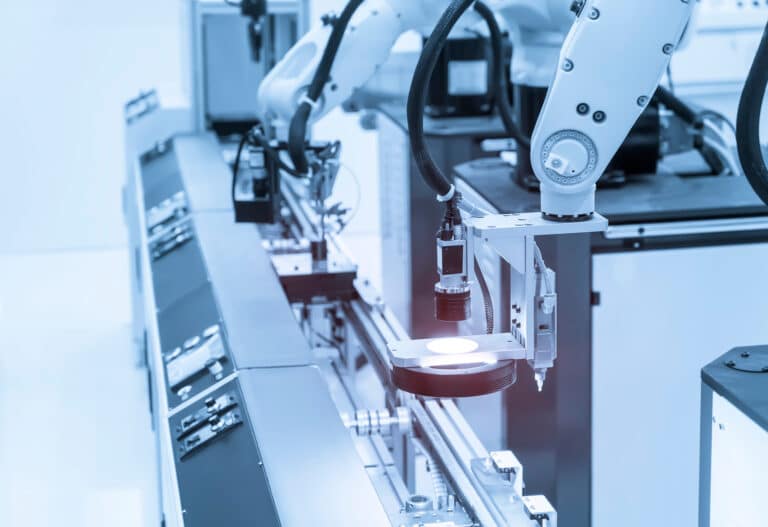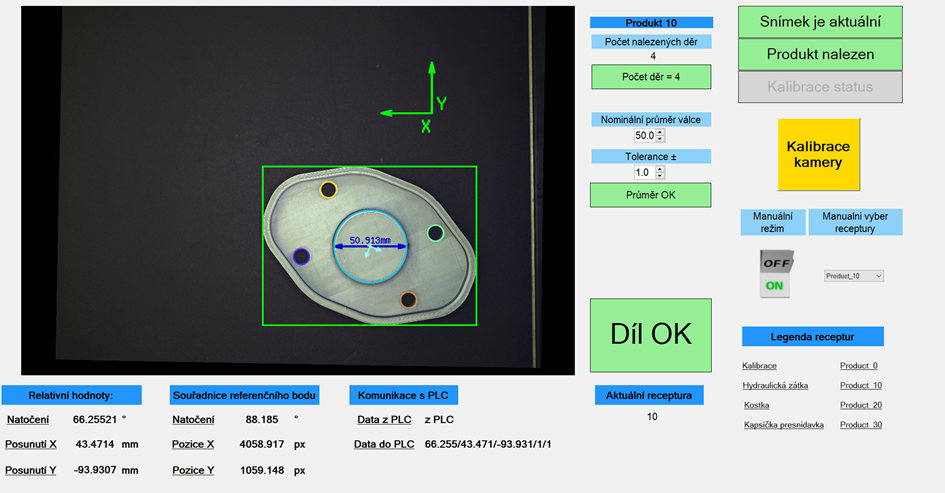Camera robot guidance
Camera vision can also be used for very reliable and accurate robot guidance on unoriented parts, the accuracy of position detection is normally up to 0,05 mm. Which is comparable to the repeatability of most robots. It is thanks to this possibility that industrial cameras are finding their place in the field of robotics. Thanks to the combination of camera vision and robot, even randomly oriented products that are on a conveyor belt, for example, can be reliably gripped and positioned.
The advantage of this concept is the absence of the need for various slides and fixtures to orient the products. Since they could be quite expensive to produce in certain cases and since there is some variability in production, this approach could be much more costly than automation using machine vision. In the case of solving this problem with industrial cameras, sensors and software, the variability of production and the possibilities for additional adjustments are many times greater, making the investment in this solution more certain.

The camera guidance of the robot can be divided into two types. The first and simpler solution is the so-called. 2D picking - the products are only on one plane and are not stacked on top of each other. This option is quite popular in industrial automation as it is not too costly and at the same time it is a sufficiently high quality solution in most automation cases. For 2D picking solutions, mostly classic industrial cameras and industrial lighting are used.
A more complex variant is then 3D bin pickingwhere the searched products are randomly oriented in a crate or box and are lying on top of each other. This concept is already quite complex and costly and is rarely used in high volume applications where a return on investment can be achieved. For 3d bin picking solutions, not only industrial cameras are usually used, but 3D scanners and other highly specialized equipment.
Example of a solution - packing products into boxes
Randomly distributed and non-oriented products moving along the conveyor belt must be placed in the correct quantity in boxes and at the same time their quality must be checked. In this case it is 2D belt pickingwhere the search objects do not overlap each other. This is a typical wrapping application where speed and reliability are of utmost importance. Industrial cameras scan the moving conveyor belt and when a product is detected, they locate it and determine its position and rotation relative to a reference point (which is common to both the robot and the camera), while at the same time qualitative characteristics such as: dimensions, shape, color, or the presence of smaller components on larger parts can be determined. This information is then passed to the robot's control system, which then grabs the searched object and moves it into the box.

